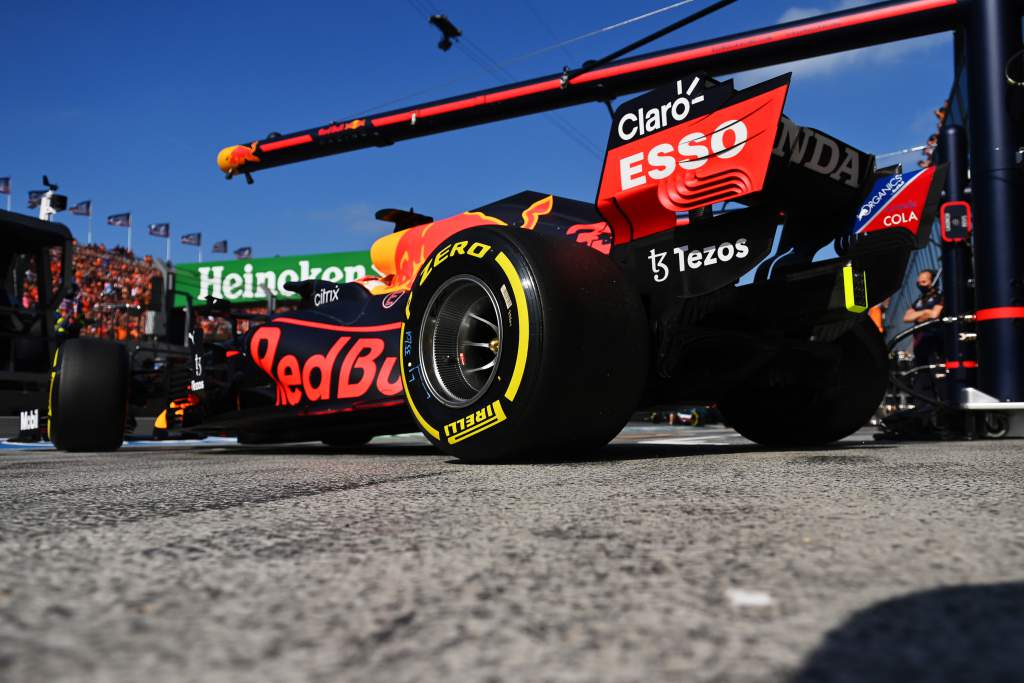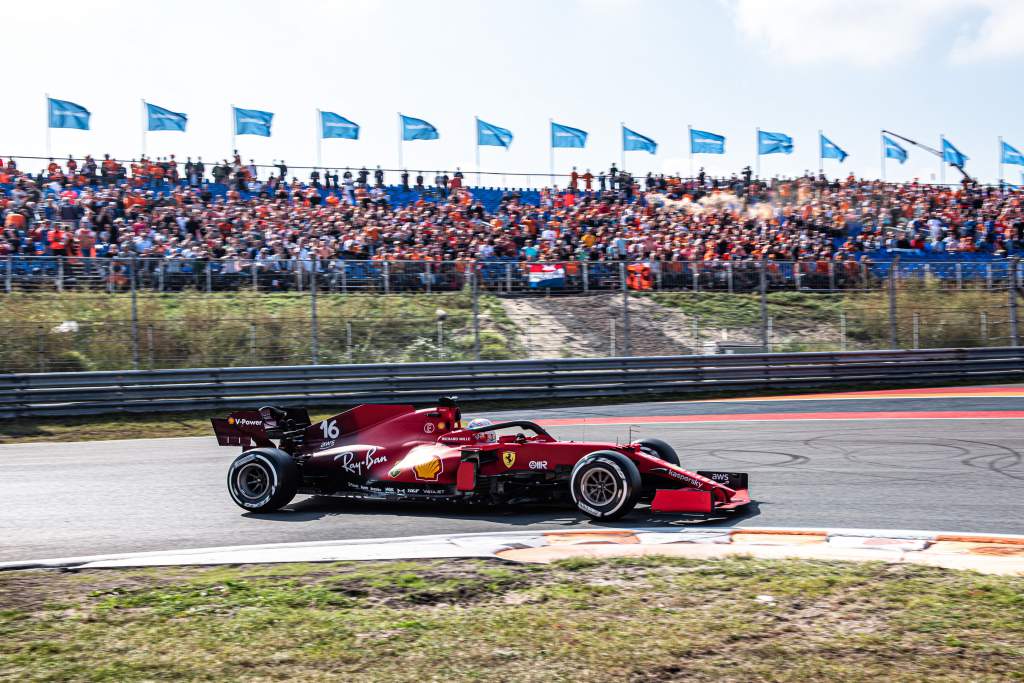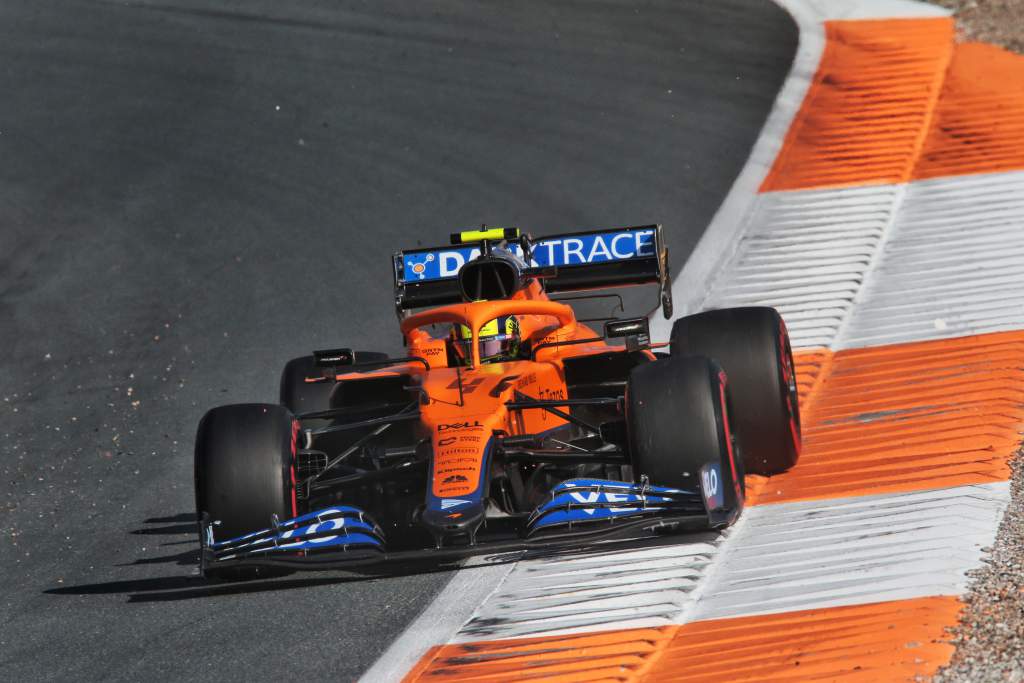Up Next

The orange army present at Zandvoort should not fret too much about Max Verstappen being only fifth-fastest in the headline times. The low-fuel runs were heavily disrupted as each of Verstappen’s attempts at a fast time were compromised, once by traffic and the other by a red flag for a Nikita Mazepin off. The time standing as his quickest was done on used tyres just to get a balance confirmation.
The long runs tell a more representative story – and it is one of considerable Verstappen superiority, albeit with a couple of caveats. As can be seen from the long-run averages Verstappen was 0.3s faster than Valtteri Bottas’ Mercedes on the same soft tyre despite a run over twice as long. Verstappen’s handling of the Red Bull-Honda looked supremely confident and on the medium tyre in the morning he was immediately whole chunks faster than anyone, including both Mercs. A big chunk of that session was of course lost to the dramas of retrieving Sebastian Vettel’s Aston Martin and there was time only for two fast laps on the softs at the end, during which Lewis Hamilton went fastest as Verstappen got caught up in traffic.

The afternoon low fuel runs were disrupted by two red flags – one for Hamilton’s expiring engine (the team told him to switch it off when it saw unusual oil system behaviour). After Mazepin then further cut the session short everyone had to prioritise long running without necessarily having completed the low-fuel runs. The Ferrari drivers got theirs in – Charles Leclerc going quickest marginally ahead of Carlos Sainz – but not Verstappen or (obviously) Hamilton. Bottas had still been trying to fine-tune the balance of his Mercedes, feeling that the changes he had made after too much oversteer in the morning had given understeer early in the lap in the afternoon.
GPS analysis suggested that there was little significant difference in the engine modes between the Red Bull and Mercedes when comparing the laps of Verstappen and Bottas and that the latter losing chunks of time in sector one was mainly at Turn 3. Bottas was still experimenting with the best line through there and felt that with a balance adjust there was a big chunk of time to be found. That and Hamilton’s absence might mean that the apparent Verstappen advantage is exaggerated. But it did appear as if the Merc was proving a little more fussy in the search of its sweet spot than the Verstappen’s Red Bull. Sergio Perez was again struggling with single-lap pace but was a match for Bottas in the long runs.

Was Ferrari’s pace real? Red Bull suspect the red cars were running the low-fuel runs lighter than them. Certainly, their long-run pace was nowhere near as impressive. Leclerc and Sainz split their tyre choices but neither was particularly quick – around the same pace as the Alpines, which did a similar split. Esteban Ocon had the Alpine very hooked up in the low-fuel running, going third-quickest there.
But in the long runs he and the Ferraris were shaded by Pierre Gasly’s AlphaTauri and – especially – Lando Norris’ McLaren.
Norris looked significantly quicker than either Ferrari or Alpine in the long runs and was nip and tuck as fast as Bottas and Perez. He’d also been extremely quick on the medium tyres in the morning, shading even Verstappen. Watch out for a possible spectacular jump in the times from him tomorrow.

The evidence of the Ferrari and Alpine split long runs suggests that although the medium has the expected better range than the soft, it remains a slower tyre even over a stint. The single-lap difference between them was as much as 0.7s – bigger than Pirelli was expecting.
As such, trying to qualify on the medium may not be an attractive choice even for Red Bull and Mercedes.
The degradation rate generally was very low with no tyre problems reported at all. One-stop, starting on the softs, looks the likely default strategy.
FP2 FASTEST TIMES
1. Leclerc Ferrari 1m10.902s S
2. Sainz Ferrari 1m11.056 S
3. Ocon Alpine 1m11.074 S
4. Bottas Mercedes 1m11.132 S
5. Verstappen Red Bull 1m11.264 S
6. Alonso Alpine 1m11.280 S
7. Gasly AlphaTauri 1m11.462 S
8. Norris McLaren 1m11.488 S
9. Giovinazzi Alfa Romeo 1m11.678 S
10. Vettel Aston Martin 1m11.713 S
Long run averages
1. Verstappen Red Bull 1m15.358s (12 laps) soft
2. Bottas Mercedes 1m15.666 (5 laps) soft
3. Perez Red Bull 1m15.728 (7 laps) soft
4. Norris McLaren 1m15.775 (7 laps) soft
5. Gasly AlphaTauri 1m15.98 (8 laps) soft
6. Sainz Ferrari 1m15.991 (4 laps) soft
7. Alonso Alpine 1m15.991 (7 laps) soft
8. Ocon Alpine 1m16.010 (12 laps) medium
9. Leclerc Ferrari 1m16.010 (6 laps) medium
10. Stroll Aston Martin 1m16.577 (7 laps) soft




